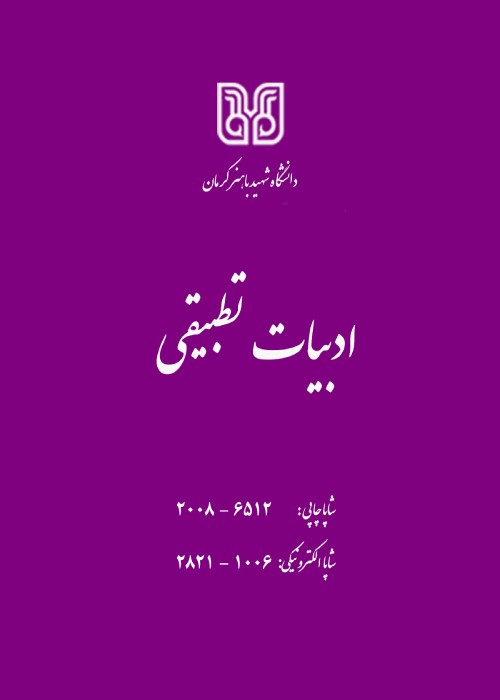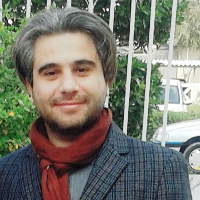Mystical literary theory: the center of gravity of mystics' literary thoughts and ideas
The question of whether literary criticism and theory existed in Iran's literary past or not is a question that has arisen in recent decades with the spread of modern literary criticism in Iran. In response to this new question, researchers and literary critics have different orientations. These orientations go back to the motivations and thoughts of these researchers and critics. Some believe in the existence of criticism and literary theory in Iran's past, and some do not accept this. The reasons of the second group are not very convincing. Also, it cannot deal with the evidence and signs of the existence of criticism and literary theory in those days. Iran's literary past has not been without criticism and literary theory; But with the definition of literary criticism and theory that existed in those days, and that definition should not be exactly the same imported definition that is common today of literary criticism and theory. Literary criticism in its modern sense is: creative, theoretical and methodical reading of the text to understand its secondary meanings and implied meanings. It is also a meaning-making approach and a new understanding of the text that is provided by reading the text in a new frame of reference. The theories that make modern literary criticism and differentiate between its types are interdisciplinary theories (see. Culler, 2000: 14). These theories are taken from such sciences as linguistics, psychology, sociology, etc. Unfortunately, sometimes the argument about the presence or absence of modern literary criticism and theory in Iran's past has caused neglect in identifying the tradition of literary criticism in those days and analyzing its characteristics and aspects. This essay believes in the existence of criticism and literary theory in the past of Iran and analyzes the tradition of theorizing and criticism. Because it intends to examine its features and coordinates and introduce a type of theme-oriented literary theory in Iran's past and the literary criticism formed based on it. We have called this type "mystic literary theory and criticism" considering its intellectual foundation and scope.
This article is a theoretical and developmental article. So this article is written with a descriptive-analytical method. Library sources are used in this article. First, the resources are valued and classified. Then, conclusions were drawn from the information received from them.
So far, various models have been presented for the typology of literary theories. In our opinion, the model proposed by Raman Selden and Peter Widdowson is the most efficient model for the typology of literary theories. This model was designed with the influence of Roman Jacobsen's (1896-1982) language communication model:Theories addressed to the author: romantic-humanist theories.
Reader-oriented theories: Reader-oriented and
phenomenological theories.
Theme-oriented theories: Marxist theories.
Text oriented theories: formalist theories and new criticism.
Theories focused on code: structuralist theories.
Koresh Safavi has exactly imitated this model and quoted it in his books, Familiarity with Linguistics in Persian Literature Studies (2019) and Familiarity with the Theory of Literary Criticism (2012).
According to the ideas presented and the models proposed to identify the types of literary theories, mystical literary theory is considered a subject-oriented theory. Because it has the greatest tendency to the subject. In mystical literary theory, meaning and content are important. This great content and meanings are closely related to "religion". The origin of the keyword "religious poetry" in mystical literary theory is here. In the mentioned discourse, this trend towards meaning versus the trend towards the form or the trend towards the container instead of the container has found many reflections in various fields of philosophy, politics, sociology, psychology, etc That It should be checked. In the following, for example, some manifestations of this problem have been discussed only in the literary opinions of Sufis. In the mystical literary theory, "what to say" is original and more important than "how to say" and this has made the literary work, whether it is a story or a poem, in the most optimistic state, only a tool to fulfill this desire. In the mystical intellectual atmosphere, poetry and poetry have been ridiculed in at least two aspects and considered worthless:The mystics were dependent on religion, and in religion, a poet has not had a pleasant image. The Qur'an describes poets as those who lead astray; They wander in every valley and do not do what they say (Shuara/226-224). In some verses, the Prophet of Islam has been cleared of the slander of poetry and the Qur'an has been cleared of the slander of poetry, and it has been said that the dignity of the Prophet is higher than these.
Until the development of mystic poetry, according to social and economic requirements, poetry mainly belonged to praise poets and a means to praise kings and powerful people. The poet has been looking for wealth with these poems. Romantic topics and descriptions in these poems are also about earthly (worthless) loves.
D Accepting modern literary theory and criticism is necessary and correct. But not in such a way that the fascination and fascination with it leads to the idea of the ineffectiveness of our literary tradition of literary theory and criticism. In the literary past of Iran, there has been literary criticism with a special definition of literary criticism in those periods. Since literary criticism is basically a theoretical practice, then there has been a literary theory in the literary tradition. These theories, which are found in the poetic treatises of philosophers and literary critics, rhetorical books, historical books, biographies and poetry collections, can be classified Based on the models used in the classification of modern literary theories.
According to the models presented in this regard, the mystical literary theory is a theory focused on the subject and is formed on the basis of the ideas and opinions of the Sufis. In mystical literary theory, content and meaning are superior to structure and form. This problem is the center of gravity of mystical literary theory and has shown itself in various ways in the discourse of literary criticism of Sufism. In this theory, the superiority of content over form has led to the dislike of poetry as a common literary form in those days. Also, in rating poets, religious poets are superior to praise poets. When talking about the story, it is looked at as a shell whose credibility is based on the content and the brain that is placed in it.
- حق عضویت دریافتی صرف حمایت از نشریات عضو و نگهداری، تکمیل و توسعه مگیران میشود.
- پرداخت حق اشتراک و دانلود مقالات اجازه بازنشر آن در سایر رسانههای چاپی و دیجیتال را به کاربر نمیدهد.



